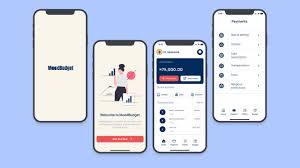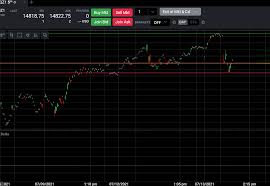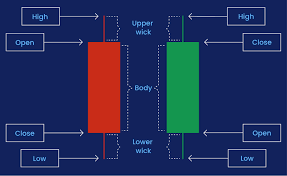Personal finance management apps Managing personal finances can be daunting, but with the advent of technology, it has become significantly easier. Personal finance management apps have revolutionized how individuals handle their finances, including budgeting, saving, investing, and many other features. This article will explore the world of personal finance management apps, discussing their features and benefits of usage and, ultimately, how they assist users in reaching financial stability and growth.

Types and Categories of Personal Finance Management Apps
- Budgeting Apps
- Apps like Mint and YNAB (You Need A Budget) help users create and maintain budgets.
- Features include expense tracking, bill reminders, and financial goal setting.
- Investment Apps
- Apps such as Robinhood, Acorns, and Betterment offer platforms for investing in stocks, ETFs, and other securities.
- Tools for portfolio management, risk assessment, and automated investing.
- Expense Tracking Apps
- Tools like Expensify and PocketGuard focus on tracking daily expenses.
- Integrate with bank accounts to provide real-time updates on spending.
- Savings Apps
- Apps like Chime and Digit encourage saving through automated transfers and savings goals.
- Features include round-up transactions and high-yield savings accounts.
- Debt Management Apps
- Apps such as Tally and Debt Payoff Planner help users manage and pay off debt.
- Offer strategies for debt reduction and interest savings.
Features of Personal Finance Management Apps
- Expense Tracking
- Real-time tracking of spending across various categories.
- Alerts and notifications for unusual spending.
- Budget Creation and Monitoring
- Customizable budgets based on income and expenses.
- Visual charts and graphs are used to monitor budget adherence.
- Bill Payment Reminders
- Notifications for upcoming bill payments.
- Integration with calendar apps for scheduling.
- Goal Setting
- Tools for setting and tracking financial goals, such as saving for a vacation or making a down payment on a house,.
- Progress tracking and motivational tips.
- Investment Tracking
- Real-time portfolio updates and performance tracking.
- Educational resources and market news.
- Credit Score Monitoring
- Access to credit scores and credit report summaries.
- Tips for improving credit health.
- Security Features
- Multi-factor authentication and encryption for data protection.
- Fraud alerts and secure login methods.
Benefits of Using Personal Finance Management Apps
- Improved Financial Awareness
- Comprehensive view of financial status in one place.
- Insights into spending habits and areas for improvement.
- Enhanced Savings
- Automated savings plans and tools for finding extra money to save.
- High-yield savings accounts and investment opportunities.
- Debt Reduction
- Strategies and tools to manage and reduce debt effectively.
- Consolidation options and payoff planning.
- Better Budgeting
- Simplified budgeting process with real-time updates.
- It helps in avoiding overspending and staying within budget.
- Convenience and Accessibility
- Access to financial information from anywhere, at any time.
- Synchronization with multiple devices for continuous monitoring.
Challenges and Limitations of Personal Finance Management Apps
- Privacy Concerns
- There are risks if you share financial information with third-party apps.
- Importance of choosing apps with robust security measures.
- User Dependency
- Over-reliance on apps for financial decisions.
- There is a need for personal financial literacy despite app usage.
- Data Accuracy
- Potential for discrepancies in tracked data.
- Importance of regular review and manual adjustments if necessary.
- Limited Customization
- Some apps may not cater to unique financial situations.
- There is a need for apps with flexible and customizable features.
Latest Innovations in Personal Finance Management Apps
- AI and Machine Learning
- Predictive analytics for spending trends and financial forecasting.
- Personalized financial advice based on user behavior.
- Blockchain Technology
- Enhanced security and transparency in transactions.
- Integration with cryptocurrency management.
- Voice-Activated Features
- Use of virtual assistants like Siri and Alexa for hands-free operation.
- Voice commands for checking balances and recent transactions.
- Integration with Other Financial Services
- Seamless integration with banks, credit unions, and investment platforms.
- Consolidation of various financial services into one app.
Future Prospects of Personal Finance Management Apps
- Increased Personalization
- More tailored advice and tools to fit individual financial situations.
- Use of advanced algorithms to provide custom financial plans.
- Expanded Global Reach
- Apps offering support for international users and multi-currency management.
- Features for global financial market access.
- Enhanced User Experience
- More intuitive and user-friendly interfaces.
- Gamification elements make financial management engaging.
Comparative Analysis of Popular Personal Finance Management Apps
- Mint vs. YNAB
- Mint offers comprehensive financial tracking for free, while YNAB focuses on proactive budgeting with a subscription model.
- YNAB’s method encourages users to allocate every dollar to a purpose, whereas Mint provides a broad overview of financial health.
- Robinhood vs. Acorns
- Robinhood offers commission-free trades on stocks and ETFs, ideal for active traders.
- Acorns rounds up everyday purchases to the nearest dollar and invests the difference, making it suitable for passive investors.
- Expensify vs. PocketGuard
- Expensify is tailored for business expense tracking and reimbursements.
- PocketGuard focuses on helping users manage their everyday finances by showing how much disposable income they have after bills and savings.
User Guides and Tutorials
- Getting Started with Mint
- Download the app and create an account.
- Link bank accounts and credit cards for comprehensive tracking.
- Set up budgets and financial goals.
- How to Use YNAB Effectively
- Understand YNAB’s four rules: Give Every Dollar a Job, Embrace Your True Expenses, Roll with the Punches, and Age Your Money.
- Regularly update and reconcile accounts.
- Investing with Robinhood
- Create an account and complete the verification process.
- Fund the account and start exploring investment options.
- Use the educational resources within the app to make informed decisions.
Conclusion
Personal finance management apps have become indispensable tools for managing personal finances. They offer a range of features, from budgeting and expense tracking to investing and savings. While they provide numerous benefits, it is essential to choose apps with strong security measures and to use them as aids rather than replacements for personal financial literacy. As technology continues to evolve, these apps will become even more personalized, secure, and integral to achieving financial health and independence.
FAQs: Personal Finance Management Apps
What is a personal finance management app?
A personal finance management app is a software application designed to help individuals manage their finances. These apps typically offer features such as budgeting, expense tracking, savings goals, investment management, and bill payment reminders.
Are personal finance management apps safe to use?
Yes, many personal finance management apps employ robust security measures, such as encryption and multi-factor authentication, to protect user data. It is crucial to choose apps from reputable developers and regularly monitor your accounts for any unusual activity.
Can I use multiple personal finance management apps simultaneously?
Yes, you can use multiple apps to manage different aspects of your finances. For instance, you might use one app for budgeting, another for investment tracking, and yet another for managing savings goals. Ensure that the apps you choose can integrate seamlessly to provide a comprehensive financial overview.
How do personal finance management apps help with budgeting?
These apps help users create and monitor budgets by categorizing income and expenses. They provide real-time updates and alerts, helping users stay on track with their financial goals and avoid overspending.
Do I need to pay for personal finance management apps?
While many personal finance management apps offer free versions, some also provide premium features for a fee. Premium features might include advanced budgeting tools, personalized financial advice, or ad-free experiences. It’s essential to evaluate your needs and determine whether the premium features are worth the cost.
Can personal finance management apps help improve my credit score?
Yes, many apps offer tools for monitoring and improving your credit score. They provide access to credit reports, suggest ways to improve credit health, and alert users to any changes in their credit status.
What should I look for when choosing a personal finance management app?
When choosing a personal finance management app, consider factors such as security, ease of use, features offered, integration with other financial services, and cost. Reading user reviews and testing free versions can also help in making an informed decision.
Are there any disadvantages to using personal finance management apps?
Potential disadvantages include privacy concerns, over-reliance on technology for financial decisions, and possible inaccuracies in tracked data. It’s crucial to use these apps as aids and maintain a good understanding of your finances independently.
How often should I update my financial information on these apps?
It’s best to update your financial information regularly, ideally daily or weekly, to ensure accuracy. Many apps can automatically sync with your bank accounts and credit cards, reducing the need for manual updates.








